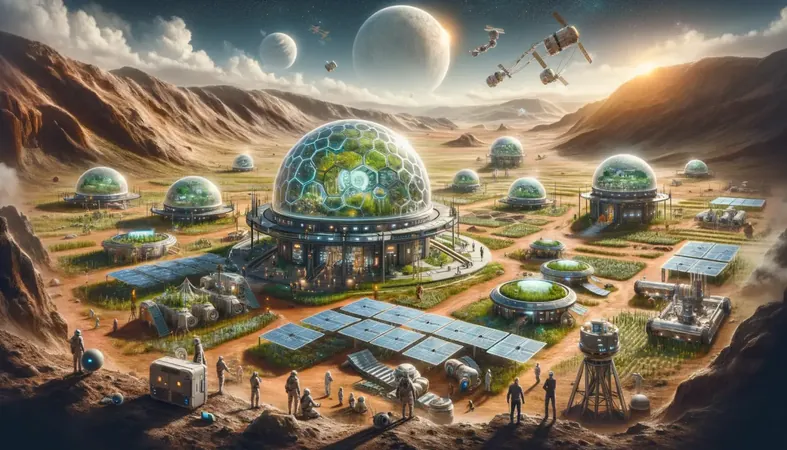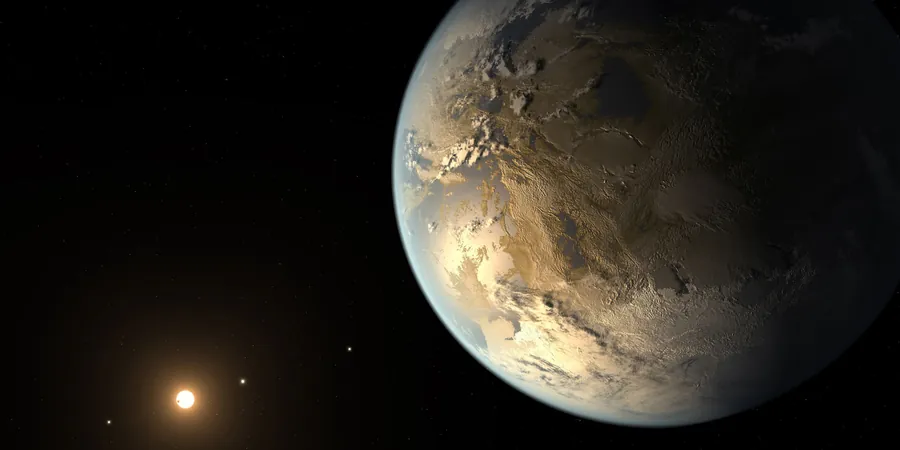
Terraforming Mars: Is Elon Musk's Ambitious Dream the Future of Humanity?
2024-11-09
Author: Jacob
Reimagining a Hostile World
Mars, while endlessly fascinating, presents a myriad of challenges. With a thin atmosphere mostly composed of carbon dioxide and frigid temperatures, transforming Mars into a livable environment will require significant alterations. This includes the establishment of autonomous, self-sustaining colonies equipped with solutions for shelter, agriculture, water sourcing, and air replenishment. Such ambitious undertakings have never been attempted on this scale.
To terraform Mars, we might consider thickening its atmosphere and stabilizing its climate to make it more Earth-like. By employing controlled releases of greenhouse gases or even the strategic detonation of nuclear devices to liberate stored carbon dioxide, we could gradually warm the Martian surface—potentially leading to conditions that could support human life.
Engineering Marvels in Extreme Conditions
Building structures on Mars would be fraught with challenges, including harsh weather, cosmic radiation, and severe dust storms. Conventional construction materials simply won't suffice; engineers must explore alternatives utilizing Martian regolith—known for its durability and potential to shield against radiation. This necessitates innovative designs employing Martian ice, basalt, and native minerals.
Fortunately, with advances from Musk’s Boring Company demonstrating effective tunneling technology, Martian construction could feature underground habitats with natural insulation, protecting inhabitants from the elements. Above-ground structures can house agricultural domes and renewable energy solutions, ensuring survival and sustainability.
Integrating Nature: The Role of Biophilic Design
One of the most critical challenges in terraforming would be to foster a sense of natural beauty and well-being in an otherwise desolate environment. Biophilic architecture, inspired by nature, could preserve and enhance psychological health for Martian inhabitants. Indoor greenhouses, vertical gardens, and controlled ecosystems mimicking Earth’s flora could create a comforting atmosphere.
Plants will not only provide psychological benefits, but they will also play a vital role in oxygen production and water recycling. The vision of huge biodomes packed with greenery could lead to self-sustaining ecosystems that nourish settlers while recycling essential resources, effectively bridging the gap between Earth and Mars.
Given the impracticality and cost of sending construction materials from Earth, utilizing local resources has emerged as a sensible strategy. Martian soil can be turned into bricks, cement, and metals through advanced 3D printing techniques, which promise to produce strong and insulated habitats with minimal human labor.
Harnessing Energy for a New Civilization
For life on Mars to thrive, dependable and sustainable energy sources will be paramount. Solar energy presents a viable option, though low-light solar panels must be developed to operate efficiently in Martian conditions. Nuclear power, while presenting potential safety risks, has also been proposed as a means to power colonies. Additionally, while wind energy is less feasible due to Mars's thin atmosphere, strategies must be devised to harness whatever energy sources are available.
Significantly, any energy generation system must support water extraction, food production, and oxygen generation—processes that require substantial power. Thus, developing a variety of sustainable energy solutions is essential for the long-term success of human settlements on Mars.
The Ethical Dilemma of Terraforming
However, terraforming Mars raises profound ethical questions. Do humans have the right to transform a pristine planet for our use? Some scientists argue for the preservation of Martian geology and atmosphere for research and exploration, while others see colonization as a necessary hedge for humanity’s survival. Ethical concerns also extend to hypothetical indigenous Martian life forms, cautioning against contamination and irreversible changes to the planet's ecosystem.
Ultimately, terraforming Mars transcends engineering challenges, demanding a cultural and ethical discourse regarding our responsibilities as guardians of the cosmos and the unknown environments within it.
A New Frontier for Humanity
Musk’s vision for a revitalized Mars resembles an inspiring dream of a second Earth, yet it poses unprecedented challenges that will test humanity's ingenuity. The quest to create a habitable Mars requires pioneering innovations in architecture, ecological management, and energy sustainability, but the implications reach far beyond mere technological advancements.
This extraordinary mission, aiming to establish a thriving human civilization on Mars, signifies a critical juncture in our understanding of the universe and our place within it. As we inch closer to embracing a multiplanetary existence, Mars stands as our first frontier—a bold stepping stone towards endless possibilities. Even if Musk’s dreams materialize, every step taken in this effort pushes us closer to reshaping the final frontier—an alien landscape transformed into a vibrant new world.









 Brasil (PT)
Brasil (PT)
 Canada (EN)
Canada (EN)
 Chile (ES)
Chile (ES)
 España (ES)
España (ES)
 France (FR)
France (FR)
 Hong Kong (EN)
Hong Kong (EN)
 Italia (IT)
Italia (IT)
 日本 (JA)
日本 (JA)
 Magyarország (HU)
Magyarország (HU)
 Norge (NO)
Norge (NO)
 Polska (PL)
Polska (PL)
 Schweiz (DE)
Schweiz (DE)
 Singapore (EN)
Singapore (EN)
 Sverige (SV)
Sverige (SV)
 Suomi (FI)
Suomi (FI)
 Türkiye (TR)
Türkiye (TR)